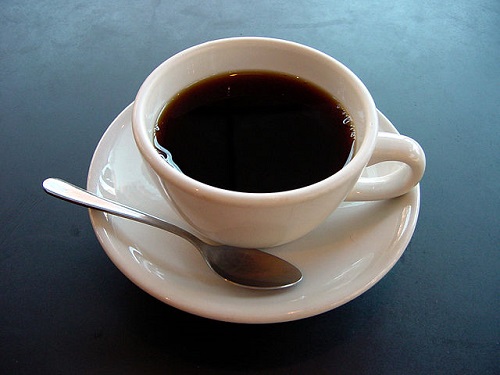
The Athletic Symphony: Similarities between Shot Put and Discus
In the realm of track and field, shot put and discus are two iconic events that showcase the strength, precision, and technique of athletes. While these events involve distinct skills and implements, they share fundamental similarities that underscore the athleticism required. This article explores the common threads between shot put and discus, shedding light on the unique synergy of these dynamic field events.

Throwing Technique:
- Shot Put: In shot put, athletes employ a rotational or glide technique. The athlete must generate explosive power and execute precise footwork to launch the shot put from within a seven-foot-diameter circle.
- Discus: Discus throwing involves a rotational technique. Athletes spin within a confined circle, building angular momentum before releasing the discus. The technique demands coordination and balance.
Power and Strength:
- Shot Put: Success in shot put hinges on raw power and strength. Athletes must generate explosive force from the lower body and transfer it efficiently through the core to propel the shot put.
- Discus: Discus throwers also rely on strength, particularly in the legs and core. The spinning motion demands controlled power to achieve the necessary velocity for a formidable throw.
Precision and Release Point:
- Shot Put: Athletes must master the precision of the release point. The shot put, a spherical metal object, requires a controlled and precise release angle for optimal distance.
- Discus: Discus throwers face a similar challenge in finding the right release point. The discus, being flat and aerodynamically sensitive, demands a precise release to maximize distance.
Balance and Coordination:
- Shot Put: Maintaining balance is critical in shot put, especially during the rotational or glide phases. Athletes need impeccable coordination to execute the throw without stepping outside the throwing circle.
- Discus: Discus throwers must master the art of balance during the spinning motion. Coordination between the upper and lower body is essential for a controlled and accurate release.
Sector Lines:
- Shot Put: The shot put landing sector is a designated area where the shot must land for the throw to be valid. Athletes aim to achieve both distance and accuracy within this sector.
- Discus: Discus throwers also target a landing sector. The distance and angle of the throw determine the final landing point within the sector.
Training Regimen:
- Shot Put: Training for shot put includes strength and explosive power exercises, along with technical drills to refine the throwing technique.
- Discus: Discus training incorporates strength conditioning, rotational drills, and practice sessions to perfect the spinning technique and release.
Mental Focus:
- Shot Put: Mental focus is paramount in shot put, especially during the intense seconds leading up to the throw. Athletes must channel concentration and precision.
- Discus: Discus throwers also need intense mental focus during the rotational sequence. The release demands concentration and timing.
Competition Dynamics:
- Shot Put: In competitions, shot put athletes often engage in a series of throws, with each attempt building on the previous one. The cumulative distance determines the winner.
- Discus: Discus competitions follow a similar format, with throwers aiming to improve their distance with each attempt within the allotted number of tries.
In conclusion, shot put and discus, while distinct in their implements and techniques, share a symphony of athleticism. From the explosive power generated to the precision of the release, these field events exemplify the artistry and strength required in the world of track and field. The similarities between shot put and discus underscore the multifaceted nature of these captivating athletic endeavors.
Here’s a simplified comparison table highlighting the similarities between shot put and discus:
| Aspect | Shot Put | Discus |
| Throwing Technique | Rotational or glide technique within a circle. | Rotational technique within a confined circle. |
| Power and Strength | Requires explosive power and strength. | Relies on strength, particularly in legs and core. |
| Precision and Release Point | Requires a precise release angle. | Demands a precise release for optimal distance. |
| Balance and Coordination | Maintaining balance during rotational or glide phases. | Balance is crucial during the spinning motion. |
| Sector Lines | The shot must land within a designated shot put sector. | Similar landing sector for discus throws. |
| Training Regimen | Includes strength and explosive power exercises, along with technical drills. | Incorporates strength conditioning and rotational drills. |
| Mental Focus | Requires intense mental focus for precision. | Demands concentration and timing during the rotational sequence. |
| Competition Dynamics | Athletes engage in a series of throws, with cumulative distance determining the winner. | Follows a similar format with throwers aiming to improve distance with each attempt. |
Both shot put and discus showcase the athletes’ strength, precision, and coordination, albeit through different techniques and implements. Understanding these similarities helps appreciate the athleticism involved in both field events.
FAQ: Similarities Between Shot Put and Discus
Q1: Are the techniques used in shot put and discus similar?
A1: While the specific techniques differ, both shot put and discus events involve rotational movements. Shot put athletes use a rotational or glide technique, while discus throwers utilize a rotational technique within a confined circle.
Q2: How important is strength in both shot put and discus?
A2: Strength plays a crucial role in both events. Shot put requires explosive power to propel the shot, while discus throwers rely on strength, particularly in the legs and core, to generate controlled power during the spinning motion.
Q3: Do shot put and discus share similarities in terms of precision?
A3: Yes, precision is a commonality. In shot put, athletes need a precise release angle for optimal distance, and discus throwers must achieve a precise release to maximize the distance of their throw.
Q4: Is balance a critical factor in both shot put and discus?
A4: Absolutely. Maintaining balance is crucial in shot put, especially during the rotational or glide phases. Similarly, discus throwers must master balance during the spinning motion for a controlled and accurate release.
Q5: Are there specific areas where the shot or discus must land for a valid throw?
A5: Yes, both events have designated landing sectors. In shot put, the shot must land within a specified sector, and discus throwers also target a landing sector based on the distance and angle of the throw.
Q6: How do training regimens differ between shot put and discus athletes?
A6: Training for shot put includes strength and explosive power exercises, along with technical drills for the specific throwing technique. Discus training incorporates strength conditioning, rotational drills, and practice sessions to perfect the spinning technique and release.
Q7: Is mental focus equally important in both events?
A7: Yes, mental focus is paramount in both shot put and discus. Athletes in shot put need intense concentration leading up to the throw, while discus throwers require focus during the rotational sequence and precise timing for the release.
Q8: Do shot put and discus competitions follow similar formats?
A8: Yes, both events follow a series format in competitions. Athletes in shot put and discus have multiple attempts, aiming to improve their distance with each throw. The cumulative distance or the best throw determines the winner.
Understanding these shared aspects between shot put and discus provides insights into the athleticism and skill required in these dynamic field events.












Leave a Reply